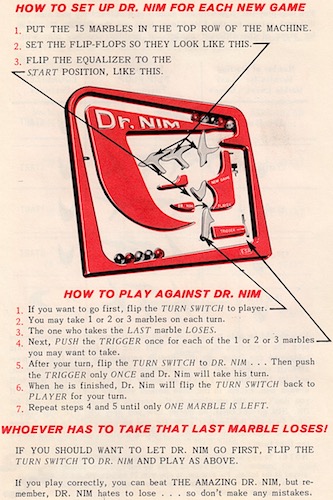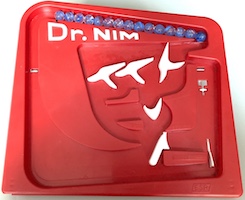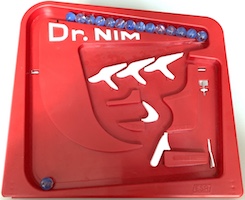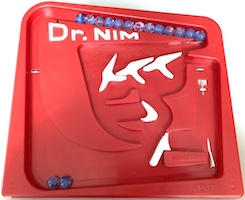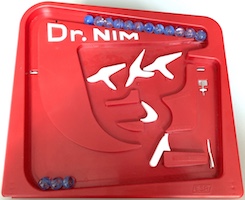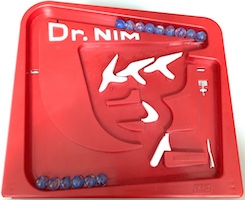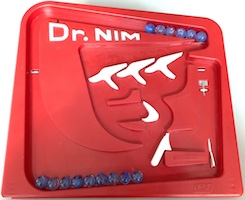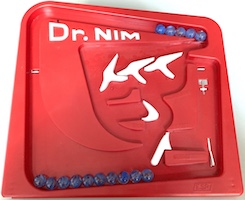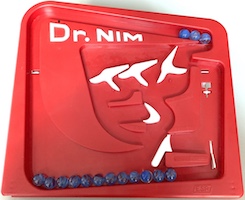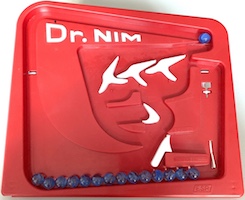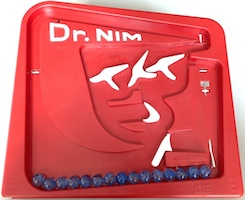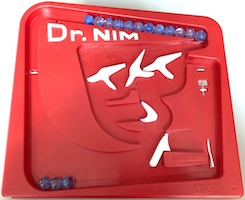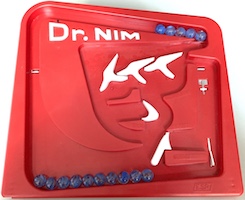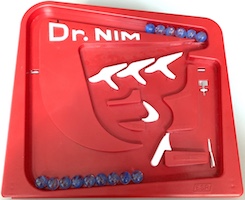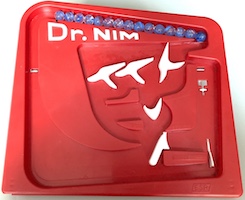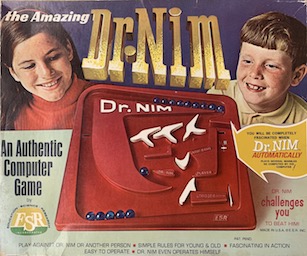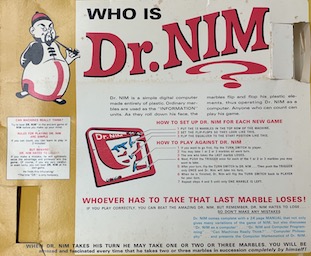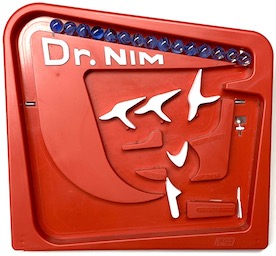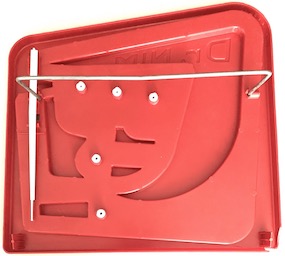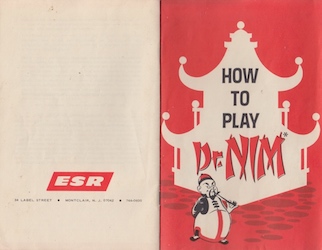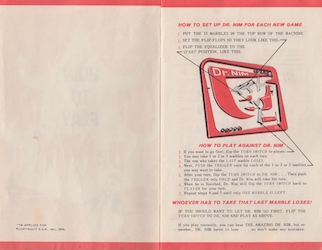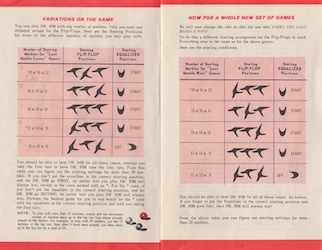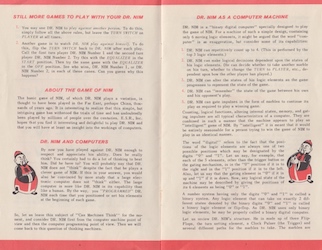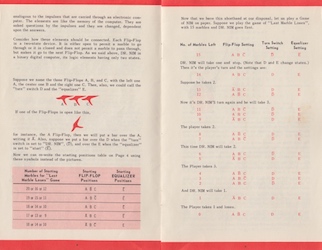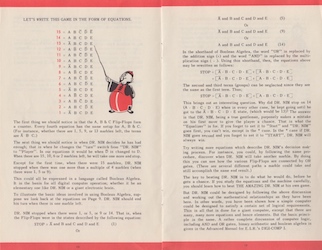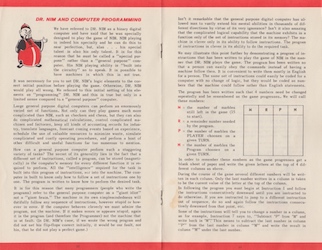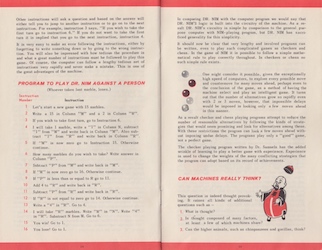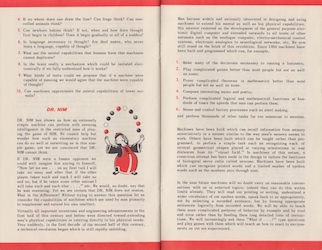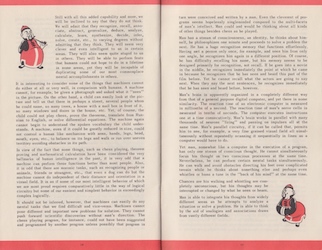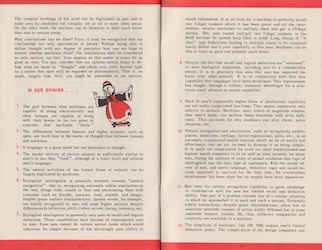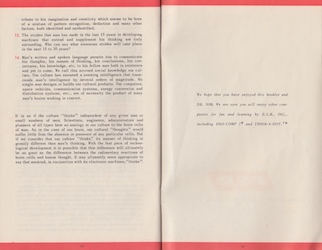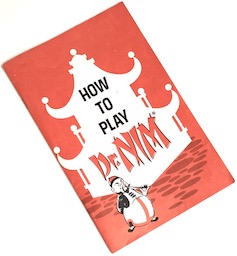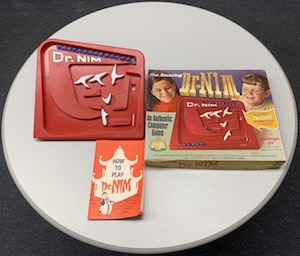
Invented by John Thomas Godfrey, copyright E.S.R. Inc., 1966.
(12" x 14.5" x 1.75" cardboard box, 11.5" high x 12.5" wide plastic board, 15 5/8" marbles)
The first page of the booklet describes how to play the basic game (as well as information about the game and variations such as starting with a different numbers of marbles):
Position the top three flippers right, right, left, and position the middle flipper (the "equalizer") to the right.Winning Strategy: Let n denote the current number of marbles waiting to be played, and define:
If you want to go first, position the lowest flipper to the right, and push the trigger in the lower right corner 1, 2, or 3 times to play 1, 2, or 3 marbles.
Then perform these steps for each round of play:The loser is the one who drops the last marble.
- Position the lowest flipper to the left.
- Push the trigger on the lower right once to make Dr. Play, who will then drop 1, 2, or 3 marbles (after done he will leave the lower flipper positioned right.)
- Push the trigger on the lower right 1, 2, or 3 times to play 1,2, or 3 marbles.
state = (n MOD 4) = the remainder when n is divided by 4If Dr. Nim plays when the state = 1, you respond by playing the number of marbles to return the state to 1, and in the final round when only 1 marble is left, he loses. The initial state of 15 marbles is 15 MOD 4 = 3. If Dr. Nim goes first, the position of the center flipper to the right forces him to drop only one marble on the first turn, giving you a chance to play only one marble. Or if you go first, insted of playing just one marble, you can play 2 marbles. Either way, from 13 marbles, continue with a winning strategy that leaves him 9 marbles, then 5, and finally just 1.
